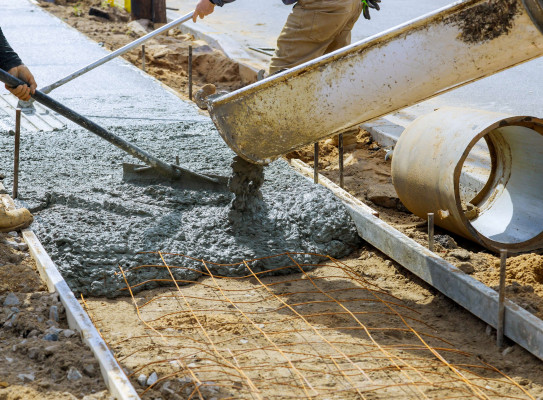Announcing new research to improve concrete, fertiliser, energy storage and CO₂ reinjection

GNS Science to receive $12.470M from the 2024 Endeavour Fund for energy-related research.
The three new projects will develop better technologies and lower the emissions of concrete, energy, and fertiliser.
A foundation for zero emissions: low-energy, carbon-absorbing cement
The problem: Concrete is an essential material for building infrastructure. The active ingredient, Portland cement, accounts for 8% of total global greenhouse gas emissions, primarily through carbon dioxide released during production. Various alternatives are under development to reduce CO₂ emissions in the concrete industry. However, a competitive replacement for traditional Portland cement has yet to be achieved.
The solution: This programme will develop an iron-based cement that sequesters CO₂ and is a direct drop-in replacement for Portland cement.

This research aims to transform the New Zealand concrete sector from a significant GHG emitter to a climate change solution.
Dr Murray McCurdy continues, "The goal is to go beyond the industry target of net-zero emissions by 2050 to enable carbon-negative concrete production. It will enhance the competitiveness of locally made concrete and increase the capacity for cement manufacturing in New Zealand."
Our collaborators: Victoria University of Wellington, University of Canterbury, Callaghan Innovation, Hummingbird Holdings, Waikato University, New Zealand Institute for Minerals to Materials Research (NZIMMR).
The project has been awarded $10,407,101.00 through the Endeavour Research Programme fund to be conducted over a term of 5 years.
Renewable-powered ammonia farms
The problem: Ammonia, as a nitrogen fertiliser, has a critical role in sustaining half the global population. Ammonia is also rapidly emerging as a premier zero-carbon energy carrier for long-term storage and long-distance transport. But current production methods are incompatible with Aotearoa’s zero-carbon aspirations. Innovating a low-carbon solution will address the vital role ammonia plays in agriculture, which accounts for 2% of Aotearoa’s GDP and provides employment to over 73,760 individuals.
The solution: Working with international experts, this research addresses this challenge by developing novel electrocatalytic systems that can overcome barriers to achieving decarbonised, decentralised ammonia production. This will enable New Zealand to produce low-carbon, transportable energy storage and "green" fertilisers.

Our proposed technology will facilitate distributed green ammonia production using renewable energy. It will empower farmers to produce their own ammonia on-site.

Dr Prasanth Gupta continues, "By harnessing Aotearoa’s distributed solar and wind energy, we aim to realise ammonia's potential as an energy vector, offering a decentralised solution to address energy storage needs.”
This project has been awarded $1,000,000 through the Endeavour Smart Ideas fund for a term of 3 years.
CO₂ reinjection for cleaner geothermal
The problem: Geothermal power generation produces CO₂ emissions due to the naturally-occurring CO₂ that is dissolved within geothermal waters. The operators of geothermal power plants are trialling systems that capture and reinject this CO₂ back underground where it came from, which stops it being released to the atmosphere.
The solution: This multi-disciplinary project aims to better understand how this reinjected CO₂ affects the overall chemistry of the geothermal system and its influence on mineral scale deposition deep underground. This is vital to ensure that we can sustainably and efficiently manage our geothermal resources in the long term.


This will help to incentivise a more rapid reduction in CO₂ emissions across the sector, as well as allowing geothermal plants to operate more efficiently.
Dr David Byrne continues, “Through this research we aim to demonstrate the efficacy of CO₂ reinjection and develop a toolset that will allow operators to understand its long-term effects on their geothermal reservoirs."
Our collaborators: Mercury NZ Ltd.
This project has been awarded $1,000,000 through the Endeavour Smart Ideas fund to be conducted over a term of 3 years.